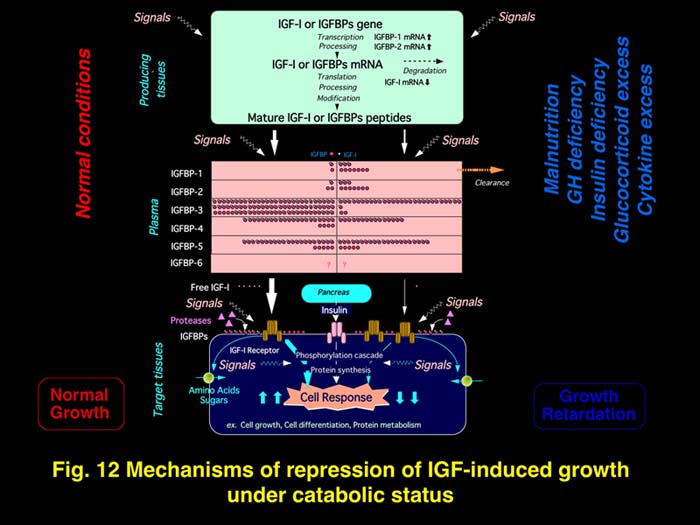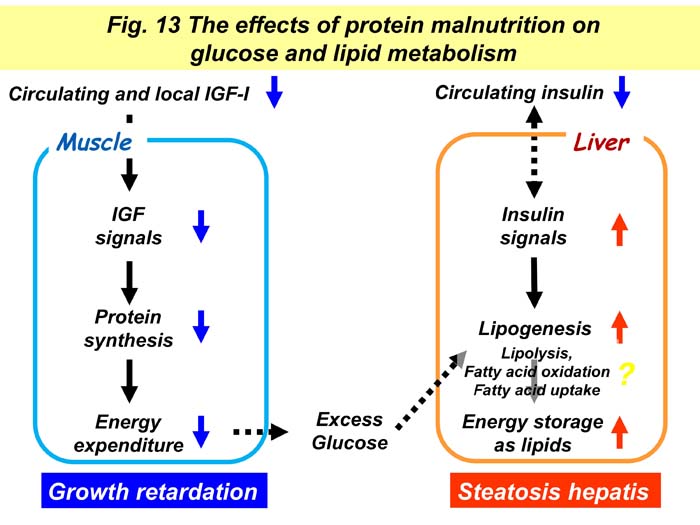It is well known that when the nutritional state deteriorates, for example, during fasting or protein malnutrition, insulin and IGF-I secretion decrease and plasma anti-insulin/IGF-I factors increase, leading to a catabolic state. Under protein malnutrition, we have shown that IGF-I production in various tissues including liver and skeletal muscle, and formation of plasma IGFBP-3-ALS-IGF complex which stabilizes IGF are reduced, and IGFBP-1-IGF complex that degrade IGFs increased. In addition, IGF resistance is induced in muscle, leading to growth retardation. This regulation is important in an energy and protein crisis to attenuate the bioactivity of anabolic hormones that stimulate the synthesis of glycogen, protein and lipids. Thus, the deterioration of nutritional state could result in the inhibition of insulin-like signaling. On the other hand, we and others have shown that the tyrosine phosphorylation states of IR and IRS-1 in rat muscle increases greatly depending on protein supply through a decrease in serine phosphorylation of IRS-1. This increase causes enhancement of insulin-dependent glucose uptake into the muscle more prominently in protein-deficient diets-fed rats than in those fed a normal protein diet. In addition, protein deprivation caused an increase in protein levels of IRS-2, leading to the marked enhancement of insulin-induced tyrosine phosphorylation of IRS-2 and its binding to the p85 regulatory subunit of PI 3-kinase in liver. Under this condition, we found marked increases in lipid and suppression of gluconeogenesis in liver. These findings suggest that tissue-specific potentiation of insulin action in the liver and the skeletal muscle plays important roles in maintaining glucose homeostasis even when energy utilization is reduced by dietary protein deprivation.

